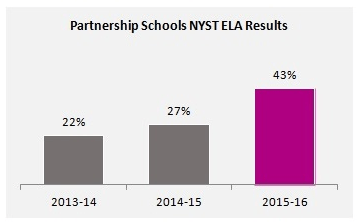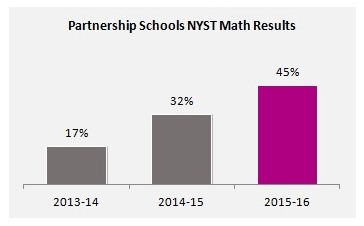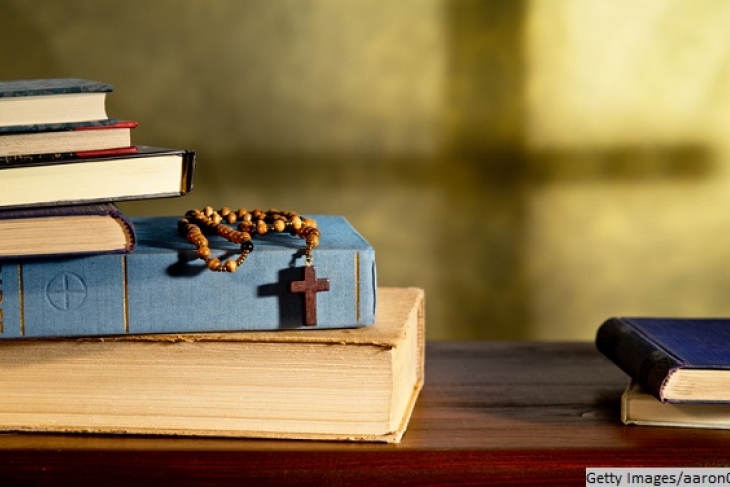It used to be that when people talked about urban school success stories, Catholic schools were at the center of the discussion. Twenty years ago, Cardinal John O’Connor, then archbishop of New York, all but dared public school leaders to send their hardest-to-teach students to archdiocesan schools. “Send me the lowest-performing 5 percent of children presently in the public schools,” O’Connor declared, “and I will put them in Catholic schools—where they will succeed.”
Such was the audacity of urban Catholic school leaders back then. We were confident. Our schools routinely outperformed neighborhood public schools. Our results were stronger—and longer-lasting—and our success came at a bargain price.In fact, it was the historic success of urban Catholic schools that fed the reform movement in general and the charter school movement in particular. Catholic schools were proving what was possible, and entrepreneurial young education leaders were quick to seize the opportunity to do the same in the public sector.
Over the past two decades, that confident leadership has been shaken by declining enrollment and financial struggles. Some in the reform sector and elsewhere have even taken to writing off urban Catholic schools as a relic of a bygone day.
At the same time, efforts from within the Catholic community have stalled out as the small-c conservatism that has long been a feature of Catholic schools (it has saved us from jumping from education fad to education fad, for instance) became a bug. As a result, charter schools have thrived as Catholic schools have wavered.
Yet the inherent strengths of Catholic education—a focus on values, faith formation, and academic rigor, coupled with the belief that all children can succeed—are as sturdy a foundation as they have always been. And we have retained much of the audacity of the leaders who made the American system of Catholic schools the biggest, most successful private school “system” in the world. Recently, educational innovators from within the Catholic community have been showing just how successful the right combination of old and new can be in their push for a Catholic schools renaissance.
One such innovation is the Partnership Schools, a private school management organization that took over six urban Catholic schools three years ago and where I am proud to serve as superintendent. This week, results from the 2016 New York State ELA and math test prove just how promising new approaches to urban Catholic education can be.
In ELA, the average score of students in New York State public schools increased by six percentage points. In charter schools, student achievement grew by approximately thirteen percentage points. Achievement at our Partnership Schools, by contrast, grew by more than sixteen percentage points. Five of our six schools increased their scores by eighteen percentage points or more.

In math, our students and teachers fared equally well. While average scores for New York State public schools increased by one percentage point, and while charter school achievement grew by roughly four percentage points, math achievement at Partnership Schools increased by thirteen percentage points from 2015 to 2016.

These scores represent the second straight year of outsized gains for the six urban Catholic schools, all of which were at risk of closing before they were turned over to the Partnership Schools network. Thanks to the selfless and spiritual vocations of our teachers and leaders, we have proven that we can go from significantly underperforming the state average to significantly outperforming the state average.
Just over a year ago, I reflected on my first year as superintendent of Partnership Schools in this post. Then I identified the four qualities of our schools and work that would help us succeed:
- Subsidiarity: The traditional Catholic idea that nothing should be done by a larger and more complex organization that can be done as well by a smaller and simpler organization drives much of Catholic education.
- Deep roots: Our schools are genuinely tied to their communities. Four are more than one hundred years old, one turns ninety this year, and the youngest has been serving its Harlem neighborhood for sixty-six years.
- Healthy fear of closure: Every day, we face the real threat of closure. Our teachers and families know that if we don’t get this right—and really fast—we won’t live to see another generation of students graduate.
- Strength through adversity: Rather than bouncing around from one education trend to another, our schools had no choice but to remain steadfast in their dedication to “back-to-basics” curricula and a traditional “no-excuses” culture.
I credit these qualities—along with the tireless dedication of our teachers and school leaders, who instill in our students the values of integrity, humility, hard work, and service—for our remarkable success. Four of our schools are over one hundred years old, all have served their communities for decades, and if we do our jobs right and continue to push forward with academic success, all will continue to serve their communities for many years to come. These results point the way forward by showing just how much our schools can accomplish when academic rigor meets a community of faith.


